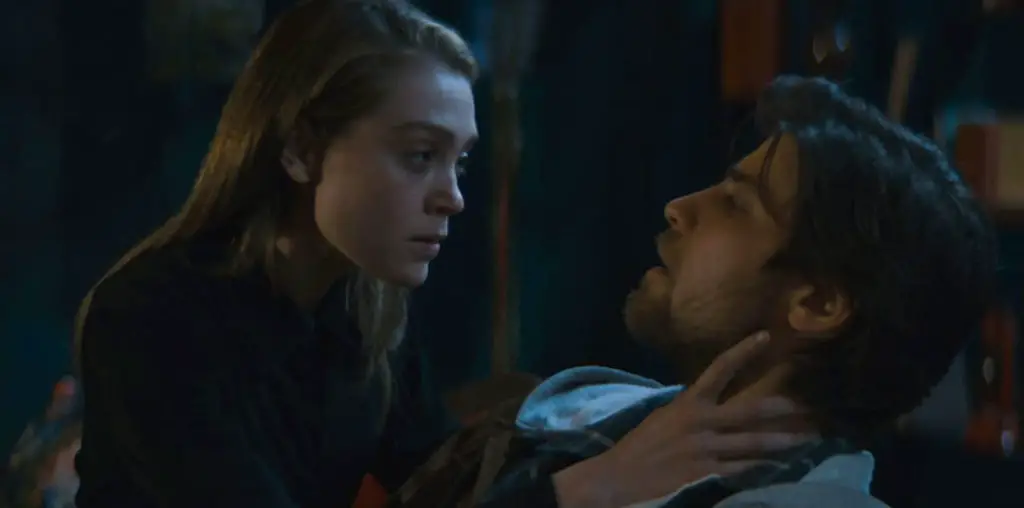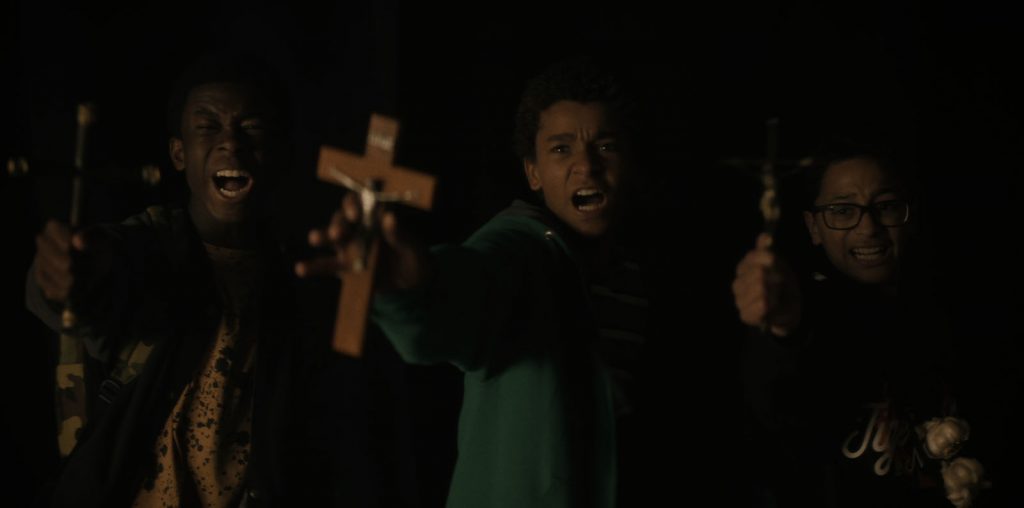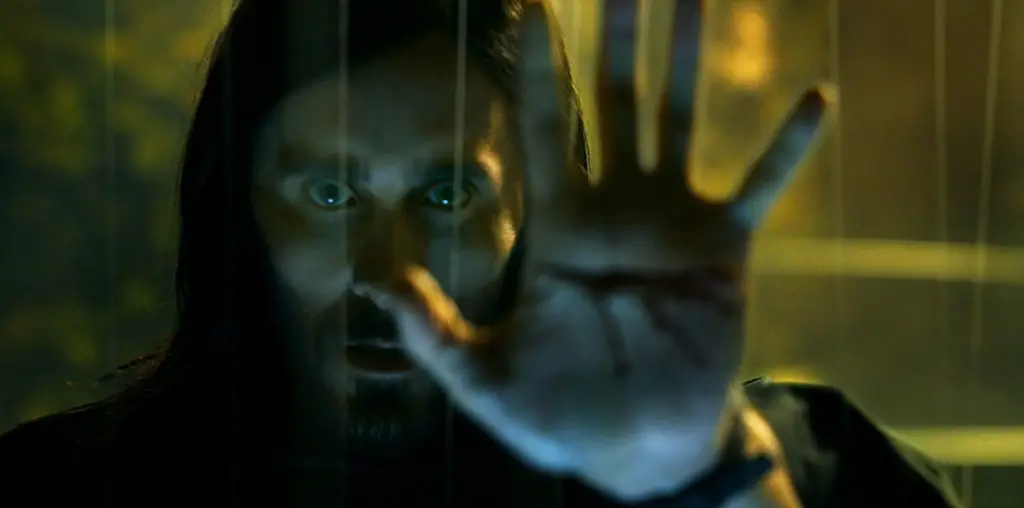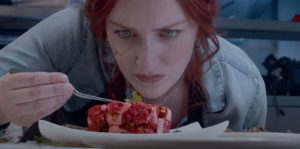
Basking in the premise of vampire cuisine, Alice and the Vampire Queen, written and directed by Dan Lantz, features several engaging cooking sequences. This horror concoction also boasts more than a little influence from Hannibal (more the show than the books or films). Each cooking sequence serves the story, displaying the titular character’s newfound freedom in the kitchens of the undead.
Alice (Shelby Hightower) works at a small greasy dinner, flipping burgers for a boss who verbally abuses her and threatens to call her parole officer at a moment’s notice. It’s far from befitting the high-class chief Alice was when she graduated culinary school. When the last straw breaks, Alice is fired/quits, leaving her unemployed and desperate, a combination a mysterious stranger soon exploits. The stranger, Charles (Graham Wolfe), offers her $500 to p one dish and the potential of a job if his boss likes it. However, little does Alice know her new boss is the Vampire Queen (Brenna Carnuccio) of the crime world.
The Vampire Queen is immediately impressed with Alice’s cooking, dubbing her the undead person’s new “favorite mortal” within just a few meals. Working at an exclusive vampire club with no questions asked is most lucrative for Alice, especially considering her violent past. She has financial stability and a creative freedom she hasn’t known in years. The only catch seems to be the constant threat of bloodsucking demons. More than a few references to Alice in Wonderland later, and Alice is sinking deeper down the rabbit hole. Being the “favorite mortal” has perks, but can it keep Alice safe from her vampire clients and co-workers?
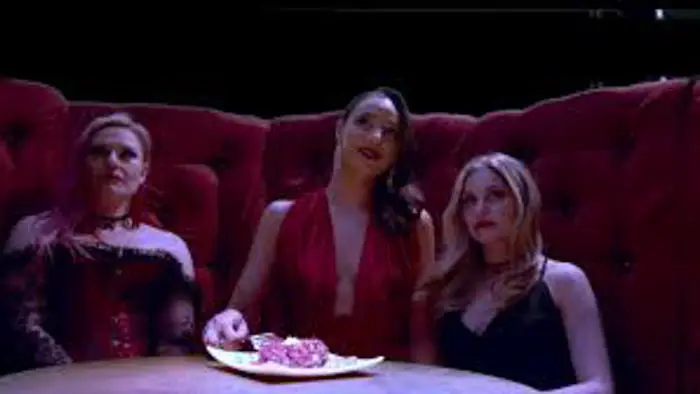
“…offers her $500 to prepare one dish…[for] the Vampire Queen…”
As the title character, Hightower carries a lot of Alice and the Vampire Queen through her performance. Hightower and Aaron Dalla Villa, as the disgraced vampire Kieran, do most of the heavy lifting, bringing this undead world to a human level. They become inserts for the audience into the dangerous world of high-class vampire dining. Villa’s character has returned to the club after a 100-year hiatus. The performance feels rooted in Spike from Buffy the Vampire Slayer, grounding the movie in modern classic vampirism. Wolfe delivers most of the “lore” or “rules” dialogue, playing the vampire’s human mediator. He gives a solid performance as a pseudo-Renfield, primarily showing Alice the ropes of working for nightwalkers.
The biggest holdup is the shifting tone from scene to scene. Many vampire flicks commit to a mood-driven Anne Rice drama or a blood-soaked horror comedy like The Lost Boys. While Buffy often found a balance, Lantz struggles to find a niche, trying to be both a gripping character drama and a macabre thriller without a genuine commitment to either genre. The results are some unrealized/unfulfilled subplots, and the rollercoaster of drama to comedy throughout means solid jokes miss the landing and more profound moments lose their punch.
Alice and the Vampire Queen works due to its premise and plotting. The vampire club and culinary flair never get old, giving the motion picture a sense of style that radiates through each scene. Vampire fans will appreciate the story and tropes Lantz uses here. However, they will most likely prefer the drama of Alice navigating a world of ageless vampires or the dark humor of Alice plating elegant “steak” tartare for hungry vampires more than a combination of the two tones. As such, the film has more than a few great concepts but needs a more organic blend of genres to elevate this to Kitchen Confidential meets Near Dark.
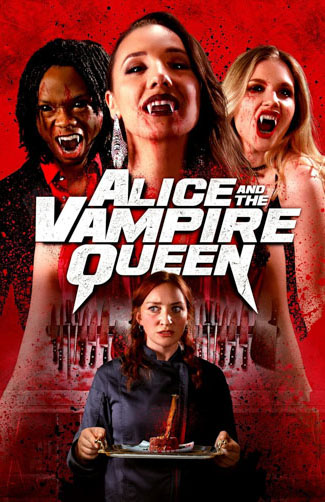
"…vampire fans will appreciate the story and tropes Lantz uses here."
